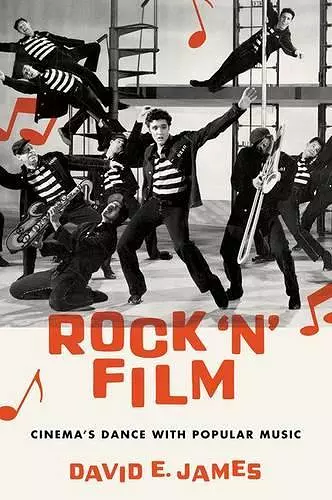Rock 'N' Film
Cinema's Dance With Popular Music
Format:Hardback
Publisher:Oxford University Press Inc
Published:4th Feb '16
Currently unavailable, and unfortunately no date known when it will be back
This hardback is available in another edition too:
- Paperback£36.49(9780190842017)

Rock 'N' Film presents a cultural history of films about US and British rock music during the period when biracial popular music was fundamental to progressive social movements on both sides of the Atlantic. Considering the music's capacity for utopian popular cultural empowerment and its usefulness for the capitalist media industries, Rock 'N' Film explores how its contradictory potentials were reproduced in various kinds of cinema, including major studio productions, minor studios' exploitation projects, independent documentaries, and avant-garde works. These include Rock Around the Clock (Fred F. Sears, 1956) and other 1950s jukebox musicals; Elvis's King Creole (Michael Curtiz, 1958) and other important films he made before being drafted as well as the formulaic musical comedies in which Hollywood abused his genius in the 1960s; early documentaries such as The T.A.M.I. Show (Steve Binder, 1964) that presented James Brown and the Rolling Stones as core of a black-white, US-UK cultural commonality; A Hard Day's Night (Richard Lester, 1964) that precipitated the British Invasion, Dont Look Back (1967), Monterey Pop (1968), and other Direct Cinema documentaries about the music of the counterculture by D. A. Pennebaker; Woodstock (1970); avant-garde documentaries about the Rolling Stones by Jean-Luc Godard, Kenneth Anger, Robert Frank, and others. After the turn of the decade, notably Gimme Shelter (1970) in which Charlotte Zwerin edited David and Albert Maysles's footage of the Altamont free concert so as to portray the Stone's complicity in the Hells Angels' murder of a young man, the 60s' utopian biracial music--and films about it--reverted to separate black and white traditions based respectively on soul and country. These produced Blaxploitation and Lady Sings the Blues (Sidney J. Furie, 1972) on the one hand, and bigoted representations of the Southern culture in Nashville (Robert Altman, 1975) on the other. Both these last two films ended with the deaths of their stars, and it seemed that rock 'n' roll had died or even, as David Bowie proclaimed, that it had committed suicide. But in another documentary about Bowie's concert, Ziggy Stardust and the Spiders from Mars (1973), D.A. Pennebaker triumphantly re-affirmed the community of musicians and fans in glam rock. In analyzing this history, David James adapts the methodology of histories of the classic musical to rock 'n' roll to show how the rock 'n' roll film both displaced and recreated the film musical.
Covering rock n roll filmmaking in its entirety, this accomplished volume is readily accessible and written (as James himself notes) without the jargon that often mars film studies Illustrated with a host of frame blowups, this informed, sharp, inviting, and absolutely authoritative book will be the source to beat on the subject of rock n roll movies for quite some time Summing Up: Essential. All readers. * G. A. Foster, CHOICE *
ISBN: 9780199387595
Dimensions: 155mm x 234mm x 31mm
Weight: 816g
488 pages